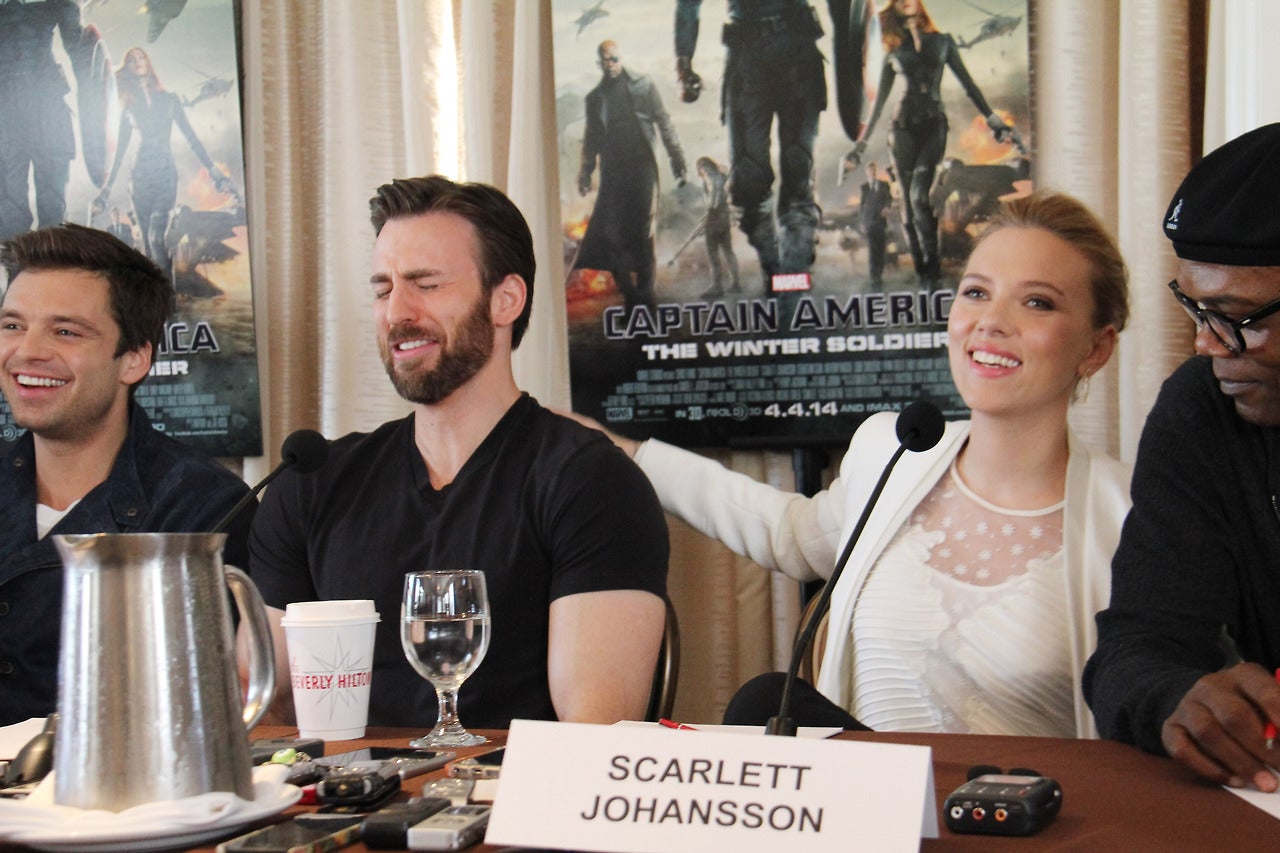Star Trek has gone down in geek culture history as the first TV show to be “saved” by its fans, with tens of thousands of them participating in a letter-writing campaign to keep the show on air.
In reality, its third season may not have been in as much danger as many fans feared, but that doesn’t really matter any more. It’s the thought that counts. Star Trek went on to become the first great megafandom, and the rest is history.
Since then, TV networks and movie promoters have learned that the best way get a media franchise up and running is to nurture this kind of obsessive fan support. Of course, it took a while to perfect this art, particularly since it’s difficult for outsiders to understand why some things inspire fandoms, while others fall by the wayside. Who but a slash fanfic reader could’ve predicted the success of cheesy ‘90s sci-fi cop show, The Sentinel, which still has people posting fanfic about it on almost a daily basis?
Online fandoms are now popular media equivalent of the tech world’s early adopters. If you can get people to start blogging and tweeting about your TV show or movie, half the work is already done. The good news is, your social media campaign doesn’t even need to be all that subtle. If you say that you’ll release the new Divergent trailer after a thousand retweets, a thousand fans will retweet you, cheerfully aware that their own Twitter feeds are being used for advertising purposes. Even fast food joints are trying to build their own fandoms, with Denny’s currently in the lead thanks to their inexplicably cool Tumblr presence.
Inevitably, there’s now a lucrative market for social media consultants who can engineer online fandoms from scratch, with the fans as willing participants in the deal. It’s an “if you build it, they will come,” kind of situation. Fans want to show support for their favorite TV show or movie, even if they’re completely aware that it’s a cynical marketing ploy. In the era of Facebook communication, you are what you Like.
In a recent episode of PBS documentary series Frontline, Douglas Rushkoff took a look at various social media fandoms from the ground up. With YouTube star Tyler Oakley at the most organic end of the popularity scale and The Hunger Games movies as the most professionally cultivated example, all of those fandoms had one thing in common: a desire to feel closer to your idols, even if the most tangible sign of that relationship is a retweet.
Help Finnick Odair make a splash at the @MTV #MovieAwards. Vote for @samclaflin at https://t.co/z1aVs4GUQg! pic.twitter.com/70dpKB2z24
— Catching Fire (@TheHungerGames) April 7, 2014
The concept of “geek culture” is relatively new, and the idea of marketing directly to that audience is even newer. The creators of 1960s Star Trek were obviously aware of the existence of geeks, but they weren’t going out of their way to actively cultivate fanfiction and costume contests and the whole nine yards. In the case of something like The Hunger Games, this is exactly what’s happening. In fact, the official Hunger Games social media presence is trying its damnedest to turn casual viewers into geeks themselves.
Old-school media fandoms spread via word of mouth, with a solid Fourth Wall between fans and creators. That method hasn’t died out yet (and possibly never will, if things like Harry Potter keep showing up out of the blue), but big-budget efforts like the Hunger Games Explorer website show us a new, more corporate-driven breed of fandom.
On Hunger Games Explorer, fans can “earn” points and badges by doing things that effectively amount to advertising The Hunger Games franchise. It’s like a social blogging site purely for Hunger Games content, where you’re encouraged post your own GIFs and screencaps, add #HungerGamesExplorer hashtags to your tweets (to earn more points, of course), and submit answers to questions like “What’s your favorite Catching Fire deleted scene?” Fans can give each other “Sparks” towards the eventual goal of achieving a place on the leaderboard of top Hunger Games fans. The current winner is a teenager with the screenname Torii Dipple, who has earned over 1.6 million Sparks.
One can’t really discuss this without pointing out the irony of manipulating teenagers into promoting The Hunger Games for free. However, this characterizes those fans as immature dupes, which isn’t exactly fair. As explained by a young Hunger Games Explorer participant in that episode of PBS Frontline, it isn’t as if kids are unaware that they’re supporting an advertising campaign. In fact, this kind of “advertising” is fun, when all you’re really doing is sharing your favorite movie with your friends. Movie studios are just making it easier to harness the power of fannish enthusiasm.
To any geek who grew up with the warmer, community-run atmosphere of LiveJournal or pre-Internet zine fandom, this probably sounds pretty gross. Thankfully, officialized fandom infrastructures like The Hunger Games Explorer site are still rare. For one thing, The Hunger Games is aimed squarely at young teenagers, who are far more likely spend hours tweeting the same promotional hashtag to earn imaginary points. The adult fans of things like Sherlock and Supernatural are far less biddable, and would prefer to sit down with a 50,000-word fanfic. Also, there’s the fact that most TV shows and books simply don’t have the budget for a 24/7 social media presence like The Hunger Games.
Virtually every TV show has a Twitter feed, but follower stats don’t necessarily mean anything. If MSNBC’s Morning Joe was cancelled, its 119,000 followers would just shrug and move on to a different breakfast show, but Sleepy Hollow’s 80,000 would probably march on Fox’s headquarters en masse if the same thing happened to them. Quantity does not mean quality, even when you’re tallying up something as seemingly simple as social media followers. Remember that “online fans as early adopters” analogy? Well, there is no better way to hook that quality audience than by interacting with them on their own level.
Take a look at a couple of TV shows that wound up with enviably intense fanbases, thanks to a combination of social media savvy and good old-fashioned word of mouth: Hannibal and Teen Wolf.
Both of these shows began with that rarest of animals: an official Tumblr account that actually spoke to fans like a regular Tumblr user, rather than seeming like someone’s embarrassing uncle using the Internet for the first time.
In Teen Wolf’s case this was probably all part of the plan, since it’s aiming for the Twilight crowd, and therefore had a typically active social media presence from day one. Hannibal… not so much.
GIF by capturedraindrops/Tumblr
“I was surprised at the demographic that the show was reaching,” said showrunner Bryan Fuller, following the show’s first season. “A significant portion was young, smart, well-read women; they really responded to this show and I typically relate to young, bright ladies. They found joy and hope in something that is arguably quite bleak. I found that really rewarding.”
Hannibal’s “young, smart, well-read women” spend hours analysing every detail of every episode, writing lengthy reviews and fanfics, creating gorgeous fanart (which is regularly reblogged on the NBCHannibal Tumblr), and dreaming up weird memes like the Hannibal flower crown trend. This show might not have great ratings, but its viewers happily tune in for social media events like Twitter Q&As, where the cast display poorly-hidden bafflement at the entire situation. This casual, “accidentally popular” atmosphere means that Hannibal’s social media presence never feels like it’s trying too hard, which is really half the battle.
Teen Wolf falls somewhere between Hannibal and The Hunger Games. Its Tumblr and Twitter accounts are a neverending stream of fandom in-jokes and encouragement to vote in teen TV polls, but its popularity may have become a double-edged sword. This is partly because the most vocal contingent of Teen Wolf fans: Sterek shippers, who support a canonically nonexistent but fanfictionally popular romance between teen human Stiles and surly adult werewolf Derek.
At first, fans felt encouraged by the show’s apparent support of Sterek, which included MTV filming a segment where the actors who play Stiles and Derek cuddled on an actual ship. But recently it’s become clear that Sterek is unlikely to happen in canon, which has caused many fans to accuse the show of “queerbaiting.” After three years of unprecedented accessibility, Teen Wolf fandom began to wonder if that Fourth Wall was only being pulled down when it was convenient for MTV, and then quickly rebuilt when fans began to get more critical.
It’s difficult to measure just how much influence this new model of “official fandom” is having on the way the fan community works. However, there are definitely a few examples of TV shows or movies that feel like they should have Teen Wolf-sized fandoms, but don’t.
Cyberterrorism drama Person of Interest seemingly has everything: politically relevant science fiction, well-written female characters, and an intense buddy-cop relationship between the two male leads. On our checklist of “what makes fandoms succeed,” it ticks almost every box, and 10 years ago, it probably would’ve been duking it out with Stargate: Atlantis as the most popular TV show on LiveJournal. So why isn’t it up there with fandoms like Superwholock and Avengers?
Basically, it’s because Person of Interest aimed at older people. It’s a CBS show whose viewers mostly watch it on live TV rather than online, and its rating are fantastic: about six times the number of “real” viewers as Teen Wolf, which has a huge international audience watching via illegal download. Person of Interest’s social media presence isn’t terrible, but it has no particular motivation to whip fans into a frenzy of hashtags the way Teen Wolf or The Vampire Diaries habitually do.
Photo via clintasharennersonlove/Tumblr
When Scarlett Johansson spoke about the “gilded cage” of being a Marvel Studios star, she was talking about the way publicizing geek media franchises now means far more than just interviews on talk shows and movie magazines.
During the two- or three-month media tour for a big movie like Avengers, every interview will be copied onto YouTube, discussed on social media, and GIF-ed and quoted across Tumblr and BuzzFeed and a thousand other sites. The machine of audience-driven Internet publicity isn’t just dedicated to the hardcore fans who work their way up the Hunger Games Explorer leaderboard, it also includes everyone who casually retweets a Tom Hiddleston GIF. This kind of thing is easier to consume than a 10-minute segment on Jimmy Kimmel, and it’s far more likely to reach that all-important early adopter audience of social media addicts.
We’re not suggesting that everyone should flush their smartphone down the toilet and run for the hills, just that it’s important to be aware of the mechanisms at work behind everyone’s favorite fandoms.
When Star Trek: The Next Generation launched in the 1980s, it was a well-publicized media franchise and, separately, the inspiration for a successful fan community. In the 21st century, those two things are one and the same. Movies from Marvel’s Avengers universe are now being released at such a rate that the social media blitz continues all year round, which is probably why Tumblr and Archive of our Own users are up to their eyeballs in Marvel fan media while DC Comics is lagging far behind. Marvel fans are having more fun, meaning that Marvel is getting richer, and everyone goes home happy. Just bear in mind that this supposedly symbiotic link is emotionally one-sided. You may love the cutesy Twitter feed for your favorite TV show, but they only love you for your money. Or your Likes.
One final example that Douglas Rushkoff tackled in PBS Frontline was that of Ian Somerhalder, star of The Vampire Diaries. With 4.8 million Twitter followers and 11 million Facebook Likes, he’s actually more popular than the show he stars in, and that’s mostly because his Internet presence is a careful work of social media engineering.
As a client of social media company theAudience, Somerhalder’s online image is carefully crafted to reach as wide an audience as humanly possible. According to its website, theAudience’s job is to “build meaningful connections between leading entertainers, global brands, and highly engaged fans, through compelling, sharable content that binds their lives together.”
In other words, even once The Vampire Diaries is gone, most of those fans will hopefully still be “bound” to Ian Somerhalder. And to be honest, this feels a lot creepier than all those blatant marketing campaigns from the faceless movie studios behind Star Trek or Superman.
When you follow someone like George Takei on Facebook, you assume that you’re connecting with the real George Takei, not a ghostwriter. When you follow Beyonce on Instagram, you want to feel like you’re getting a glimpse into her real life, rather than consuming a set of publicity photos released at opportune times of day across the world. So while the give-and-take relationship between fans and creators still seems to be working out fairly well, the social media accounts of “real people” may be exploiting us to a far more cynical extent.
No one cares who’s behind the official Spider-Man Twitter feed as long as the new movie trailers keep on coming, but if Katy Perry turns out to be run by an intern, there will be Hell to pay.
Photo via peaceinfinitystars/Tumblr




